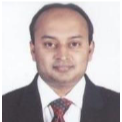International Journal of Image, Graphics and Signal Processing (IJIGSP)
IJIGSP Vol. 15, No. 5, 8 Oct. 2023
Cover page and Table of Contents: PDF (size: 1056KB)
Face Recognition Using Modified Histogram of Oriented Gradients and Convolutional Neural Networks
Full Text (PDF, 1056KB), PP.60-76
Views: 0 Downloads: 0
Author(s)
Index Terms
Face recognition, Convolutional Neural Network, softmax, deep learning, HOG, L-Spacek, NIR, JAFFE and YALE Feature extraction · Image database Preprocessing · Recognition accuracy
Abstract
We are aiming in this work to develop an improved face recognition system for person-dependent and person-independent variants. To extract relevant facial features, we are using the convolutional neural network. These features allow comparing faces of different subjects in an optimized manner. The system training module firstly recognizes different subjects of dataset, in another approach, the module processes a different set of new images. Use of CNN alone for face recognition has achieved promising recognition rate, however many other works have showed declined in recognition rate for many complex datasets. Further, use of CNN alone exhibits reduced recognition rate for large scale databases. To overcome the above problem, we are proposing a modified spatial texture pattern extraction technique namely modified Histogram oriented gradient (m-HOG) for extracting facial image features along three gradient directions along with CNN algorithm to classify the face image based on the features. In the preprocessing stage, the face region is captured by removing the background from the input face images and is resized to 100×100. The m-HOG features are retrieved using histogram channels evenly distributed between 0 and 180 degrees. The obtained features are resized as a matrix having dimension 66×198 and which are passed to the CNN to extract robust and discriminative features and are classified using softmax classification layer. The recognition rates obtained for L-Spacek, NIR, JAFFE and YALE database are 99.80%, 91.43%, 95.00% and 93.33% respectively and are found to be better when compared to the existing methods.
Cite This Paper
Raveendra K, Ravi J, Khalid Nazim Abdul Sattar, "Face Recognition Using Modified Histogram of Oriented Gradients and Convolutional Neural Networks", International Journal of Image, Graphics and Signal Processing(IJIGSP), Vol.15, No.5, pp. 60-76, 2023. DOI:10.5815/ijigsp.2023.05.05
Reference
[1]Yong Xu, Qi Zhu, Zizhu Fan, David Zhang, Jianxun Mi and Zhihui Lai, “Using the idea of the sparse representation to perform coarse to-fine face recognition,” Information Sciences. Vol. 238, pp. 138–148, July 2013
[2]Yi Sun, Xiaogang Wang, Xiaoou Tang, “Deep learning face representation by joint identification-verification,” Advances in Neural Information Processing Systems, Vol. 27, pp. 1988–1996, 2014.
[3]Jae Young Choi, “Spatial pyramid face feature representation and weighted dissimilarity matching for improved face recognition,” The Visual Computer: International Journal of Computer Graphics, 34(11), 1535–1549 (2018)
[4]Larry S. Yaeger, Richard F. Lyon, Brandyn J. Webb, “Effective Training of a Neural Network Character Classifier for Word Recognition,” Advances in Neural Information Processing Systems, pp. 807–813 (1996)
[5]Alex Krizhevsky, Ilya Sutskever and Geoffrey E. Hinton, “ImageNet classification with deep convolutional neural networks,” Advances in Neural Information Processing Systems, pp. 1097–1105 (2012)
[6]GailiYue and Lei Lu, “Face recognition based on histogram equalization and convolution neural network,” International Conference on Intelligent Human-Machine Systems and Cybernetics, pp. 336-339, 2018.
[7]Muhtahir O. Oloyede, Gerhard P. Hancke and Herman C. Myburgh, “Improving Face Recognition Systems Using a New Image Enhancement Technique, Hybrid Features and the Convolutional Neural Network,” IEEE Access, vol. 6, pp. 75181-75191, 2018.
[8]Wenqi Wu, Yingjie Yin, Xingang Wang and De Xu, “Face Detection With Different Scales Based on Faster R-CNN,” IEEE Transactions on Cybernetics, vol. 49, no. 11, pp. 4017-4028, Nov. 2019.
[9]Xianzhang Pan, “Fusing HOG and convolutional neural network spatial-temporal features for video-based facial expression recognition,” IET Image Processing, vol. 14, Issue 1, pp. 176 – 182, January 2020.
[10]Yanhong Zhang , Kun Shang, Jun Wang, Nan Li and Monica M.Y. Zhang. “Patch strategy for deep face recognition,” IET Image Processing, Vol.12, Issue 5, pp. 819- 825, May 2018.
[11]Feng Cen and Guanghui Wang, “Dictionary Representation of Deep Features for Occlusion-Robust Face Recognition,” IEEE Access, vol. 7, pp. 26595-26605, 2019.
[12]Pengfei Ke, Maoguo Cai, Hanmo Wang and Jialong Chen, “A novel face recognition algorithm based on the combination of LBP and CNN,” International Conference on Signal Processing, pp. 539-543, 2018.
[13]Fanzhi Kong, “Facial expression recognition method based on deep convolutional neural network combined with improved LBP features,” Personal and Ubiquitous Computing, vol. 23, pp. 531–539, 2019.
[14]Erfan Zangeneh, Mohammad Rahmati and Yalda Mohsenzadeh, “Low resolution face recognition using a two-branch deep convolutional neural network architecture,” Expert Systems with Applications, vol. 139, pp. 1-11, January 2020.
[15]Raj Silwal, Abeer Alsadoon, P. W. C. Prasad, Omar Hisham Alsadoon & Ammar Al-Qaraghuli, “A novel deep learning system for facial feature extraction by fusing CNN and MB-LBP and using enhanced loss function,” Multimedia Tools and Applications, vol, 79, pp. 31027–31047, 2020.
[16]Ashok Kumar Rai , Radha Senthilkumar and Aswin Kumar R, “Combining pixel selection with covariance similarity approach in hyper spectral face recognition based on convolution neural network,” Microprocessors and Microsystems, vol. 76, pp. 1-8, 2020.
[17]Leslie Ching Ow Tiong, Song Tae Kim and Yong Man Ro, “Multimodal Facial Biometrics Recognition: Dual-stream Convolutional Neural Networks with Multi-feature Fusion Layers,” Image and Vision Computing, vol. 12, pp. 2020.
[18]Tripti Goel and R Murugan, “Deep Convolutional - Optimized Kernel Extreme Learning Machine Based Classifier for Face Recognition,” Computers and Electrical Engineering, vol. 85, pp. 1-12, 2020.
[19]Shuai Peng, Hongbo Huang, Weijun Chen, Liang Zhang and Weiwei Fang, “More trainable inception-ResNet for face recognition,” Neurocomputing, vol. 411, pp. 9-19, 2020.
[20]Xi Yin and Xiaoming Liu “Multi-Task Convolutional Neural Network for Pose-Invariant Face Recognition,” IEEE Transactions on Image Processing, vol. 27, no. 2, pp. 964-975, Feb. 2018
[21]Yanan Wang, Tian Na, Xiaoning Song and Guosheng Hu, “Bi-directional CRC algorithm using CNN based features for face classification,” Asian Conference on Artificial Intelligence Technology, Vol.2018 ,Issue 16 p. 1457 – 1462, November 2018
[22]Hana Ben Fredj, Safa Bouguezzi and Chokri Souani, “Face Recognition in Unconstrained Environment with CNN,” The Visual Computer, vol. 37, pp. 217–226, 2021.
[23]M. Chandrakala and P. Durga Devi, “Two-stage Classifier for Face Recognition using HOG Features,” Materials Today: Proceedings, vol. 47, pp. 5771-5775, 2021.
[24]Htwe Pa Pa Win, Phyo Thu Thu Khine and Khin Nwe Ni Tun, “ Face Recognition System based on Convolution Neural Networks,” International Journal on Image, Graphics and Signal Processing, vol. 6, pp. 23-29, 2021.
[25]Peng Lu, Baoye Song and Lin Xu, “Human face recognition based on convolutional neural network and augmented dataset,” Systems Science & Control Engineering, vol. 9, pp. 29-37, 2021.
[26]Walid Hariri, “Efficient masked face recognition method during the COVID-19 pandemic,” Signal, Image and Video Processing, vol. 16, pp. 605–612, 2021.
[27]Paul Viola and Michael J. Jones, “ Robust Real-Time Face Detection,” International Journal of Computer Vision, Vol. 57, No. 2, pp. 137-154, 2004.
[28]Surbhi Gupta, Kutub Thakur and Munish Kumar, “2D-human face recognition using SIFT and SURF descriptors of face’s feature regions,” The Visual Computer, vol. 37, pp. 447–456, 2021.
[29]Deepali Virmani, Palak Girdhar, Prateek Jain and Pakhi Bamdev, “FDREnet: Face Detection and Recognition Pipeline,” Engineering, Technology & Applied Science Research, vol. 9, pp. 3933-3938, 2019.
[30]Srinivas Halvi, Nayina Ramapur , K B Raja and Shanti Prasad, “Fusion Based Face Recognition System using 1D Transform Domains,” International Conference on Advances in Computing and Communications, Procedia Computer Science, Vol. 115, pp.383–390, 2017
[31]Shreyas Saxena and Jakob Verbeek, “Heterogeneous Face Recognition with CNNs,” ECCV Workshops, pp. 483-491, 2016.
[32]Srijith Rajeev, Shreyas Kamath K.M, Qianwen Wan and Karen Panetta, “Illumination Invariant NIR Face Recognition using Directional Visibility,” Electronic Imaging, pp. 273-1-273-7, 2019.
[33]Sateesh Kumar H C, C Chowda reddy, Raja K B and Venugopal K R “Face Recognition based on STWT and DTCWT using two dimensional Q-shift Filters,” International Journal of Engineering Research and Application, vol. 7, pp. 64-69, 2017.
[34]Farid Ayeche and Adel Alti, “HDG and HDGG: an extensible feature extraction descriptor for effective face and facial expressions,” Pattern Analysis and Applications, vol. 24, pp. 1095–1110, 2021.
[35]Rahul Ravi, Yadhukrishna S.V and Rajalakshmi prithviraj, “A Face Expression Recognition Using CNN & LBP,” International Conference on Computing Methodologies and Communication, pp. 684-689, 2020.
[36]Sujay S N and H S Manjunatha Reddy, “Extended Local Binary Pattern Features based Face Recognition using Multilevel SVM Classifier,” vol.8, pp. 4123-4128, 2019.
[37]Shucheng Huang and Lu Zhuang, “Exponential Discriminant Locality Preserving Projection for Face Recognition,” Neurocomputing, vol. 208, pp. 373-377, 2016.
[38]V. Betcy Thanga Shoba and I. Shatheesh Sam, “Hybrid Features Extraction on Face for Efficient Face Recognition,” Multimedia Tools and Applications, vol. 79, pp. 1-22, 2020.


